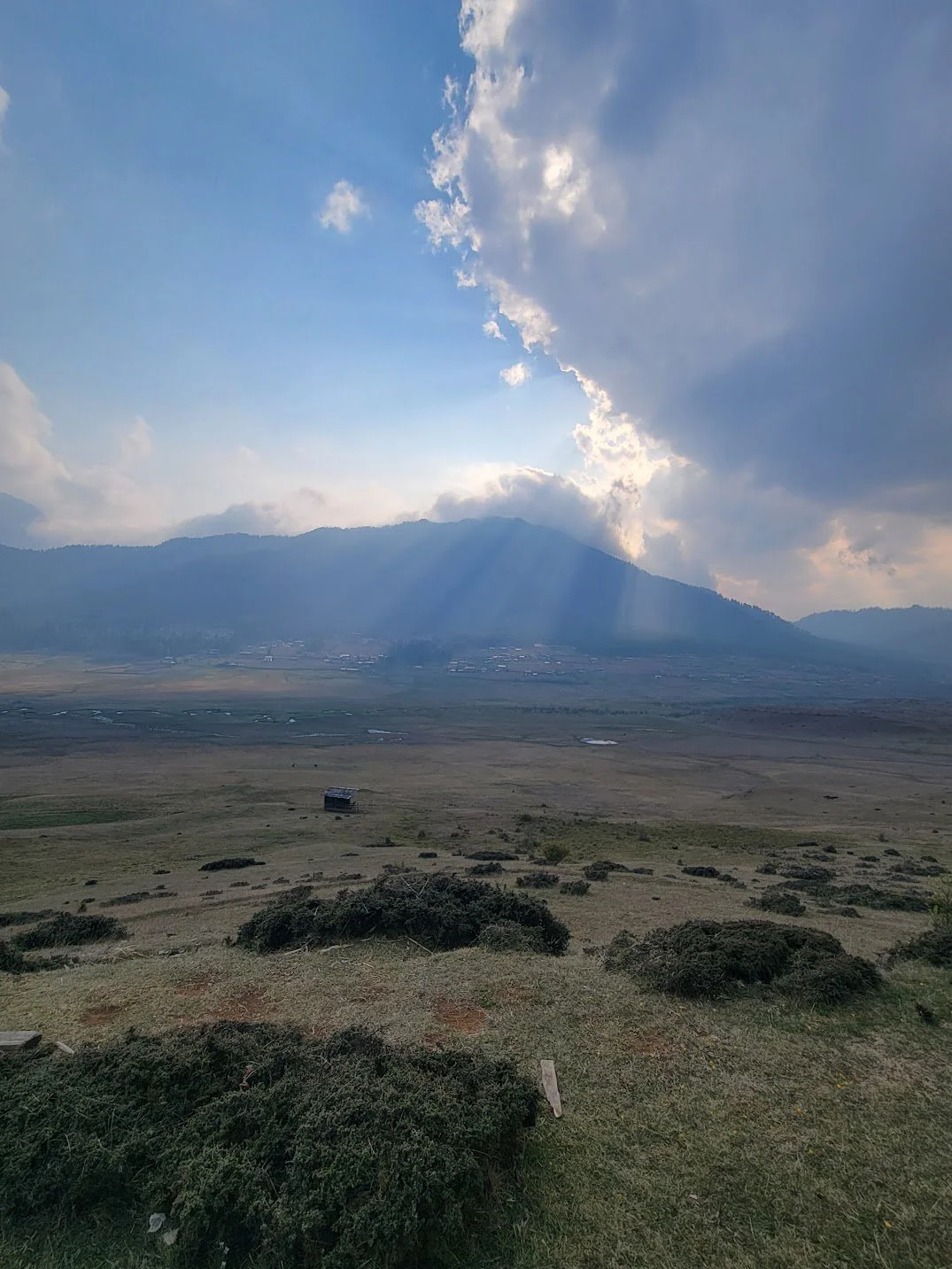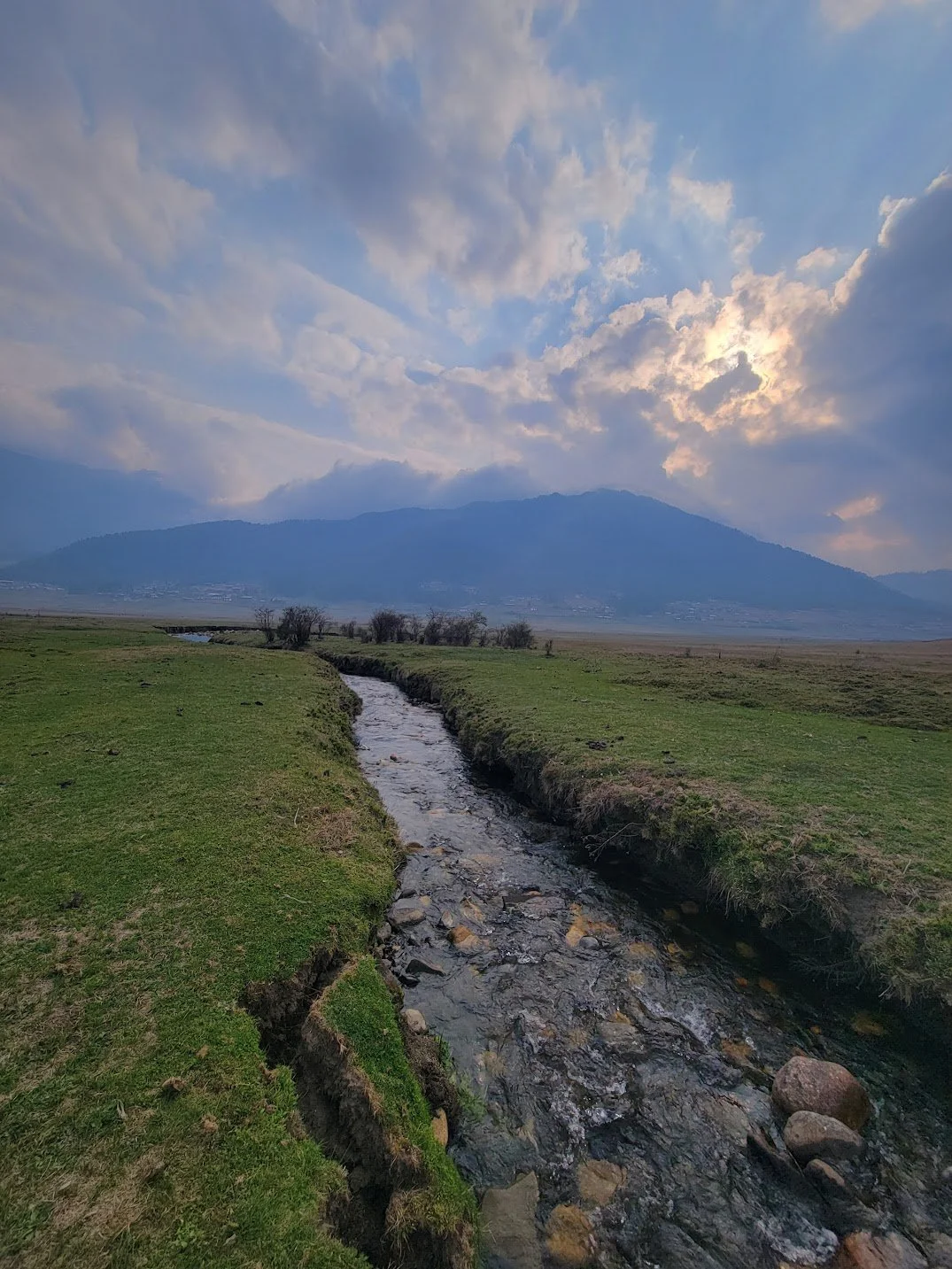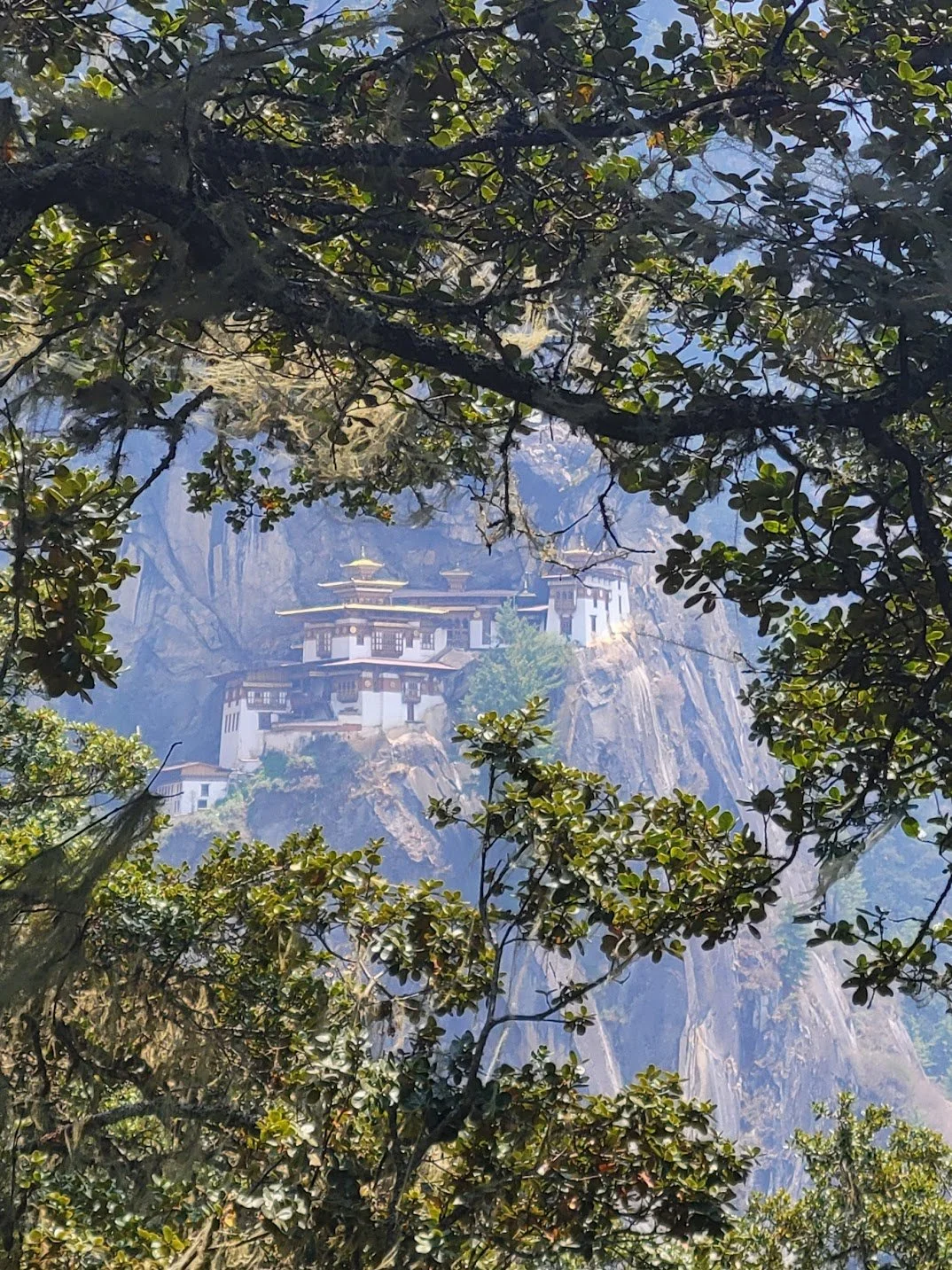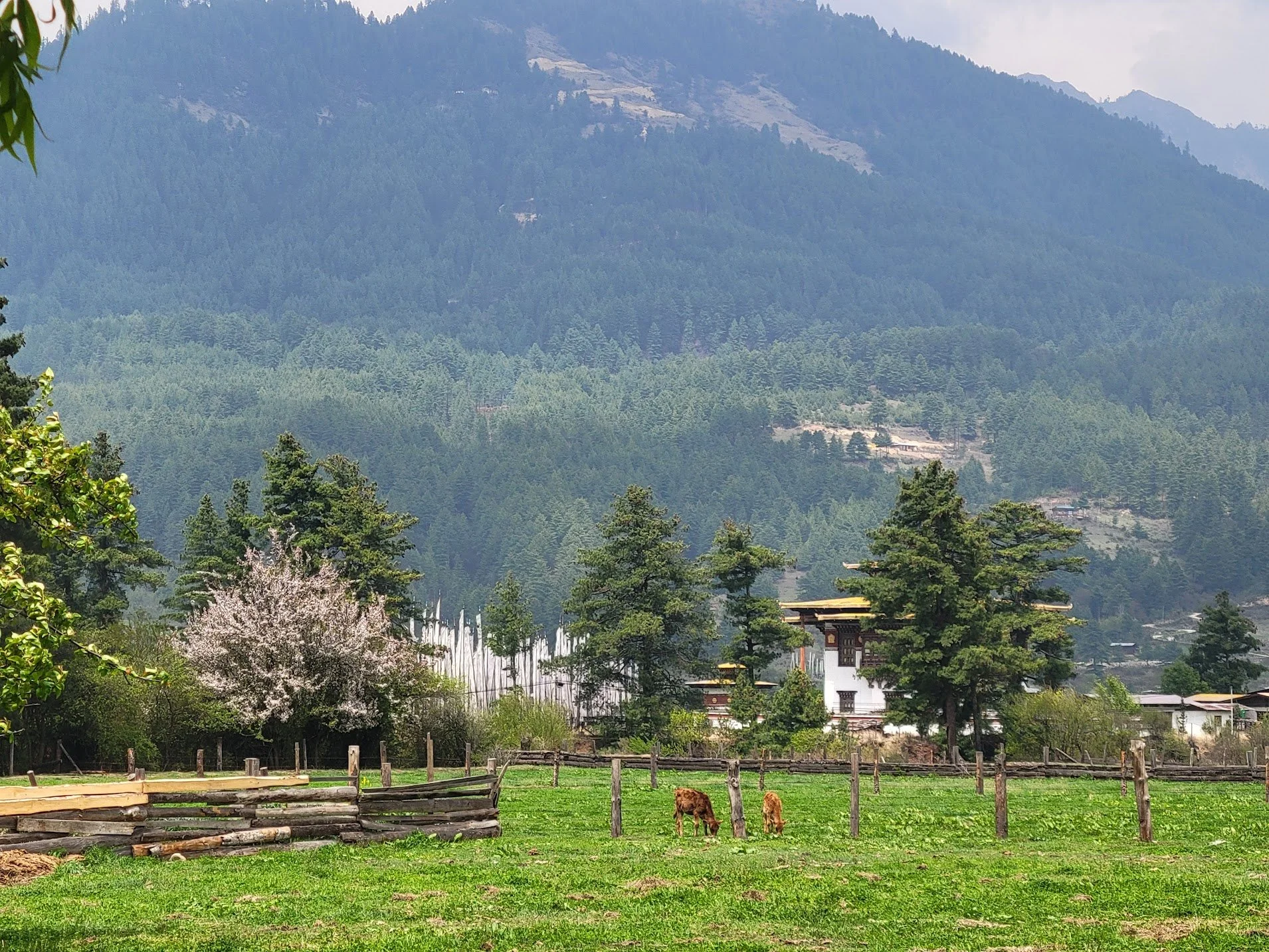Bhutan-The journey to Happiness
Hi players,
I have dreamed of this journey for over a decade.
Yet we started searching for the right trip for us only a year ago.
Although we usually travel alone, we felt it would be fitting to go out in a group this time, due to the unusual destination.
And so, in our search, we also found an unusual guide
Dr. Nimrod Sheinman, who is lovesick in Bhutan
His only wish is to help people get to know Bhutan, meet his Bhutanese friends, and let them meet new Israeli friends—we, the travelers.
We planned the trip for October, the unusual colored visa for Bhutan has arrived.
I waited with excitement, and then came October 7th...our world turned upside down 😞
The dream was shelved.
But not for long… Karma is karma
As Karma, our Bhutanese guide, said, nothing could stand against their and our positive energies for this human encounter to happen.
And so, our trip was on.
In April, we traveled to Bhutan, the kingdom of happiness, with two big questions in my mind:
Has the kingdom that gave birth to the concept of GNH -Gross National Happiness (back in the 1970s)—cracked the secret of happiness?
And are its residents really happy?
I was excited to learn and return home with a recipe for my happiness.🥳
The colorfulness of the country welcomed us from the very first moment
We landed in Paro, a small airport between high mountains
(For a moment, I felt that the plane would soon touch them)
The passenger hall was modest yet picturesque, ornate and warm
We arrived at passport control and presented the visa we received.
The clerk looked at me, puzzled.
Almost in a whisper, she apologetically tells me the visa was rejected. What???
At moments like these, I usually panic.
But there was something reassuring in her look: In that moment, I remembered that I had received something twice. I pulled out the second document, and a sigh of relief spread across her face.
It's OK. Welcome to Bhutan.
Standing there at the counter, I sensed in her a feeling that everything would be fine, a belief that things would work out. This belief, this reassurance, accompanied me throughout the journey. I can't explain it. It's something about the people's faces and the atmosphere. You can sense even in the blessing of peace that is said every time two strangers meet on the street. They smile gently at each other, nod, and say Kuzu Zangpo la (which is a Hello and How are you simultaneously). The second encounter with Bhutanese residents (in fact… many of them) was in Thimphu, the capital of Bhutan.We went out to see the Royal Memorial Stupa. It turns out we were not alone. A puja, a mass prayer ceremony, took place in the stupa.Men, women, and children of all ages gathered around the stupa dressed in traditional clothes, holding sitting mats.They arrived slowly and in rare silence, filling all the paths around the stupa. Despite many people, there was no congestion, pressure, or noise. Everything was conducted pleasantly and peacefully; for moments, it seemed that time stood still. Only the sound of prayers filled the air, carried away by the blowing winds of the afternoon.Even though I didn’t understand a word of the prayers, the rhythm and melody played in the veins of my soul. I sensed again that everything would be okay. I was wrapped in calmness.The power of prayer goes beyond religious differences and words. It is available to everyone. It is just a silent whisper of our wishes.
We continued to the national stadium, where archery competitions are held. Archery is the national sport.The target is about 100 meters from the shooter. Although I was sitting a little closer, I did not understand how it was possible to aim at it, let alone hit it; I could hardly see it from this distance.This reminded me that we don't always see the goal clearly in life, but if we aim at it and know our direction,
there is a good, even excellent, chance that we will also hit it.
We saw the arrow hit the target, and the winning team broke into a victory dance. We were excited along with them. Victory in every language is contagious.While we were sitting on the bleachers, we saw the giant Buddha on the hill in the distance, overlooking the whole area, perhaps reminding everyone who looked up that someone was always watching and guarding us. We went up the hill the next day to see the Buddha closely. The site is undoubtedly impressive, but I felt discomfort. The Buddha's size compared to the average person was overwhelming, almost contradicting Buddhism's teachings, which believe everyone can become a Buddha. Maybe size doesn’t matter, yet the feeling was, “I am so small.”This ambivalent feeling faded quickly as we stepped down. We saw local artists focused on creating the most beautiful, colorful ornaments for the gate. Looking at how the artists were in the flow, I thought that art and creativity could be a religion, too. Creativity is the external expression, the mirror of our beautiful souls. Everyone can be Budhaa, as everyone is a creator of something.
It was time to leave the ‘city’ and explore the rural country. We flew to Bumthang. Every step of the way, we felt the faith and spirituality of the country. As we traveled through the mountains and the valleys, we passed through prayer flags. Always in 5 colors that symbolize Green- (water) - Compassion, Blue- (sky/space) - Health and longevity, Red- (fire) - Wish fulfillment Yellow – (earth) - Victory over obstacles White- (air) - Good fortune) The flags were fluttering in the wind, spreading wishes across the county. We passed prayer wheels; some spun manually by people, others rotating by the power of water flowing through or moving by the power of the wind, reciting the six-symbol mantra ‘Om Ma Ni Padme Hum'It is hard to explain, but I felt a constant sense of hope that as long as the flags and wheels were turning, life would go on.
Whether spun manually or by the forces of nature, the continuity of life was powerfully present.
The simple presence of ‘keep moving’ may be a “good enough” answer to feeling happy.
Punakha
We visited many Dzongs, traditional Bhutanese fortresses that serve as Buddhist temples. Photographing is prohibited in temples, so you must trust my word.
They are beautiful and colorful.
This photo of the hall of the monk school in Thimphu can give you an idea. It was one of the only places we were allowed to take pictures.
I found it hard to feel miserable when surrounded by beautiful colors.
Being happy can be as simple as painting our environment with vivid colors.
We thought there couldn't be a more colorful sight, but we were wrong
Our next stop was the festival at the Ura village, one of many festivals held in Bhutan. Bhutanese love their traditions and rituals, and holding festivals is how they pass them on from generation to generation.
It was a celebration of colors, costumes, masks, and dances.
One particular thing in the scene was funny yet troubling. A man with a wooden phallus was chasing the dancing women.
The phallus is often painted next to the door of a Bhutanese house, intended to drive away the evil eye and malicious gossip. We were told that recently, fewer houses had painted it on the door—a sign of change.
I was mesmerized by the children at the festival. I wondered if the progress and technology crawling slowly into Bhutan would change how they view their traditions.
Tradition is undoubtedly essential, yet some things that were acceptable in ancient times may not serve the present.
I am not sure Bhutan has found the balance that will respect the past, present, and future; maybe it's part of their quest for Happiness.
It is also very true for one’s personal life; maintaining the right balance between past experiences and letting go of the things that do not serve us now or the person we want to become is a lifetime journey.
After traveling around Bhutan for more than a week and being fortunate to meet new Bhutanese friends, a former PM, an entrepreneur, a judge, a social activist, a blogger, and a monk, I still didn’t have the recipe for happiness.
On the contrary, I learned that happiness in Bhutan is as elusive as it is in the rest of the world.
Yet it became very clear to me that the values present at every encounter—honesty, humility, generosity, strong faith, and kindness—played a big part in creating a government policy to pursue happiness.
Despite the revelation that Bhutan is not happier than the rest of the world, I was not disappointed. I felt that the mere declaration and intention of making sure that every policy considers the impact it creates on well-being is HUGE. Intentions matter.
It seems to impose significant challenges and may be the reason for slowing economic growth, yet you can’t help but respect a culture that has a clear compass and is willing to pay the price for what it stands for.
I felt the happiness in the air in the way people expressed their trust in the King. Everyone admired the king and talked about him with great love.
When I asked what the secret of his popularity was, the answer was simple: he truly cares about our people.
I don’t think such trust would have existed if GNH had not been embraced and considered as important as GDP.
Rhododendron bloom
The nature in Bhutan is not just beautiful; it’s uniquely captivating. Raw.
At times, I felt like I was walking through Genesis Views. Wild landscapes that were untouched by humanity or technology were frozen in ancient times.
We walked mindfully in silence, engaging all of our senses to experience fully the gifts of the place.
Phobjikha valley
"To me, GNH is simply development with values"- His Majesty the King Jigme Khesar Namgyel Wangchuck.
My visit to Bhutan could not have been whole without two more experiences.
The first was staying one night in a natural Bhutanese home. We stayed one night at Ama Om homestay. (about 20 miles from Punakha Dzong)
Ama Om welcomed us with a radiant smile and a big hug. Green fields and fresh air embraced us.
Ama Om house and buckwheat fields
We had the pleasure of preparing momos (a local dumpling with vegetables or meat) together in her kitchen,
We also enjoyed a new experience: bathing in a hot stone with herbs under the sky next to a small creek.
Hot stone Bath
Ama om dAma om doesn’t speak any English. Nevertheless, we understood each other: Ama Om’s kind smile and shining warmth perfectly substituted words.
I tend to give great importance to words (I am a wordy person...:)
I learned a great lesson that kindness and true giving are more important than language. It is a language by itself.
Monks in debate
We have witnessed monks in debate. Again, we didn’t understand one word. yet it is pretty surprising how much you can ‘understand’ when relying only on body language. It made me think about what can be possible if I use more skills other than talking…:)
Tiger Nest trek- view on the path
It was time for the highlight of the travel—the famous Tiger Nest monastery. It was intended to be our last destination to allow enough time to adjust to Bhutan’s elevation before the trek.
The Tiger Nest is a monastery built on a cliff. It looks like it is hanging on a cliff, leaving you in awe of what people can do.
Honestly, I was afraid I couldn’t do it, which could have been a great disappointment.
After all, I have come this far to do it and decided I would not surrender to doubts- questioning my ability to make it.
The climb to the monastery was physically challenging, mainly because of the elevation (approx. 3200 meters). Yet, I knew that often, my worst enemy was not my body but my mind and thoughts.my worst enemy was often
We started walking at 6:30 am to beat the crowds and avoid the heat.
At 10:30 am, we were at the top after a nice rest in the cafeteria (after 1/3 of the way). There are no photos inside the monastery since photographing is prohibited. You’ve got to trust me, it is beautiful, a celebration of colors and spirituality.
Tiger Nest
I made it to the top because I found my own pace. I intentionally focused on every little step, thinking only one step ahead, listening to every muscle, and breathing in and out slowly and steadily.
Life is like a trek: set a goal, find your pace, and focus on a single step. Take a partner; use whatever makes it easier for you to handle the challenge (a walking stick was beneficial)
Don’t think about the whole journey, only the little next step.
Stop, Breathe, Look around. The peak has its beauty, but the path is charming.
Rural view
Bhutan is changing. (Ain’t we all?)
The pace of change is much slower than we are used to in the Western world.
It is moving as mindfully as you can expect from a culture trying to find the right balance between keeping things as they always were and respecting the past (faith, tradition, and rituals)
while embracing progress and development.
The journey to Bhutan made it even clearer that the most important challenge we face in life is to hold on to our core identity, keep our true nature—the very things that make us ‘US’—and find ways to let our unique voices be heard in a world filled with so much noise and nonsense.
I intend to follow the development process as it may be a refreshing way to learn how to do things differently.
I hope to visit the mindfulness city when the vision becomes reality.
The answer to my biggest question is that Bhutan’s happiness is a mindset, a constant journey to become its best version rather than a final destination;
well…it seems like good advice for every one of us. A lifelong journey…to be our best version
Playfully yours,
Rina 🙂
Our itinerary in a nutshell :
Day 1- Landing in Paro. A bus ride to Thimpu. Tachog Lhakhang Old Bridge. Night in Thimpu
Day 2- Thimpu, National Memorial Chhorten, visiting ancient crafts: Hand-made incense factory, Hand-made paper factory, Archery arena
Day 3- Thimpu, Buddha Dordenma Statue, Central monastic school, Royal Takin reserve
Day 4- Flight to Bhumntang, Jakar, Ura village, Ura Festival
Day 5- Punakha Valley, Phunakha Djong, Punakha Suspension bridge
Day 6- Ama Om homestay, and rural beauty
Day 7- Phubjika Valley trail
Day 8- Dochula
Day 9- Thimpu, Arts school, street, and markets
Day 0- Paro city
Day 11- Taktsang Trek - Tiger Nest
If you are looking for a great tourist agency in Bhutan, Mercury Bhutan in Thimpu is the best choice






















